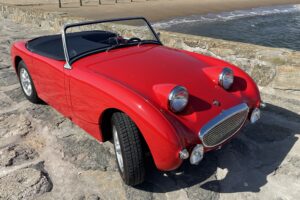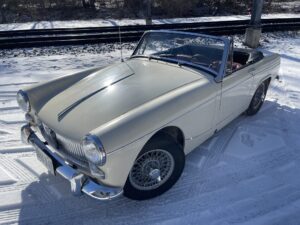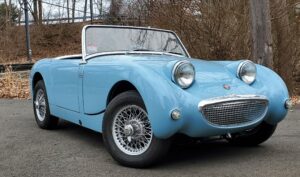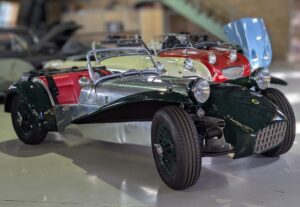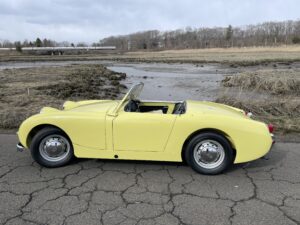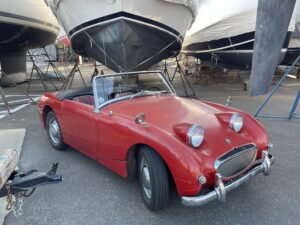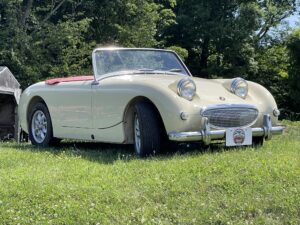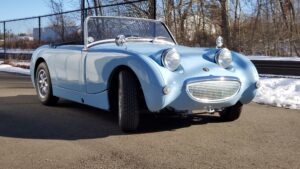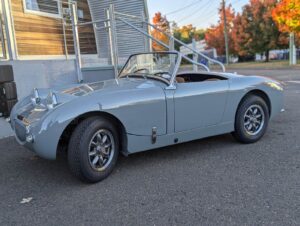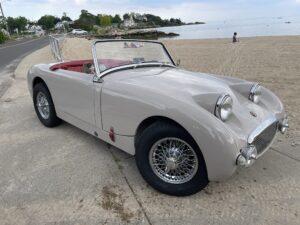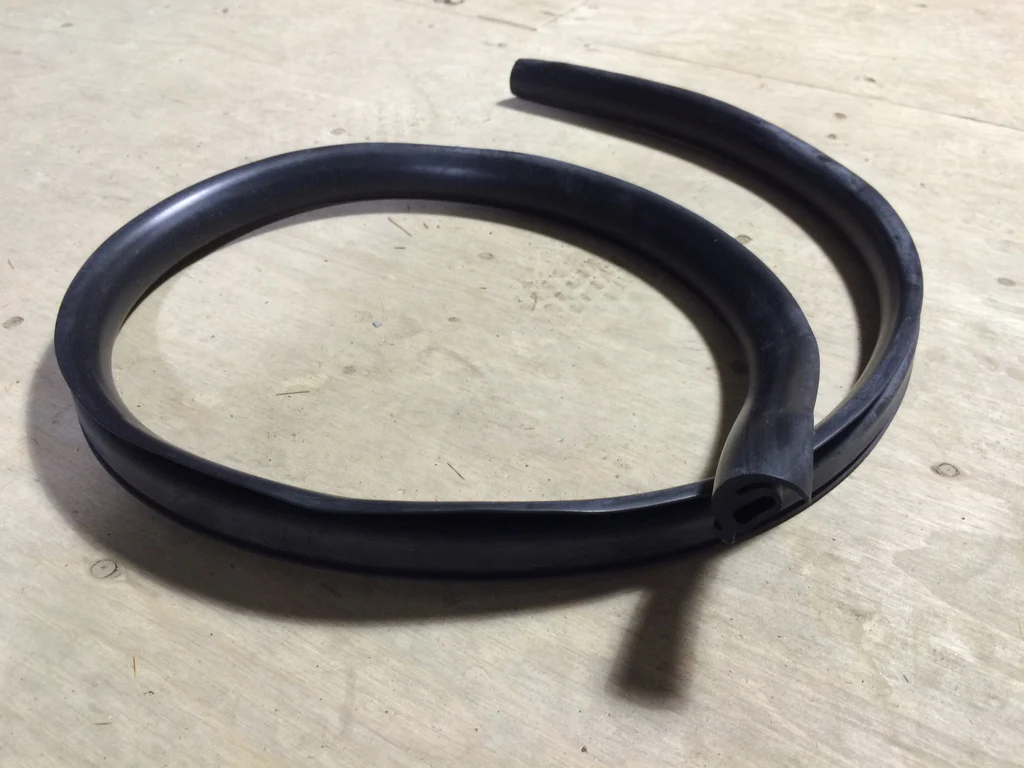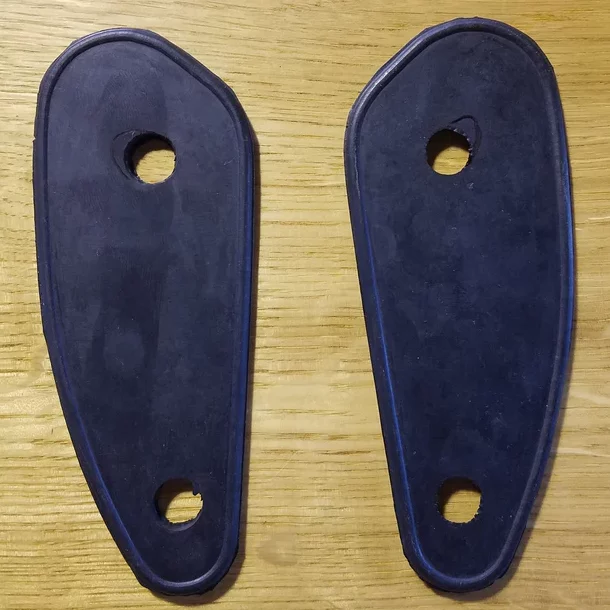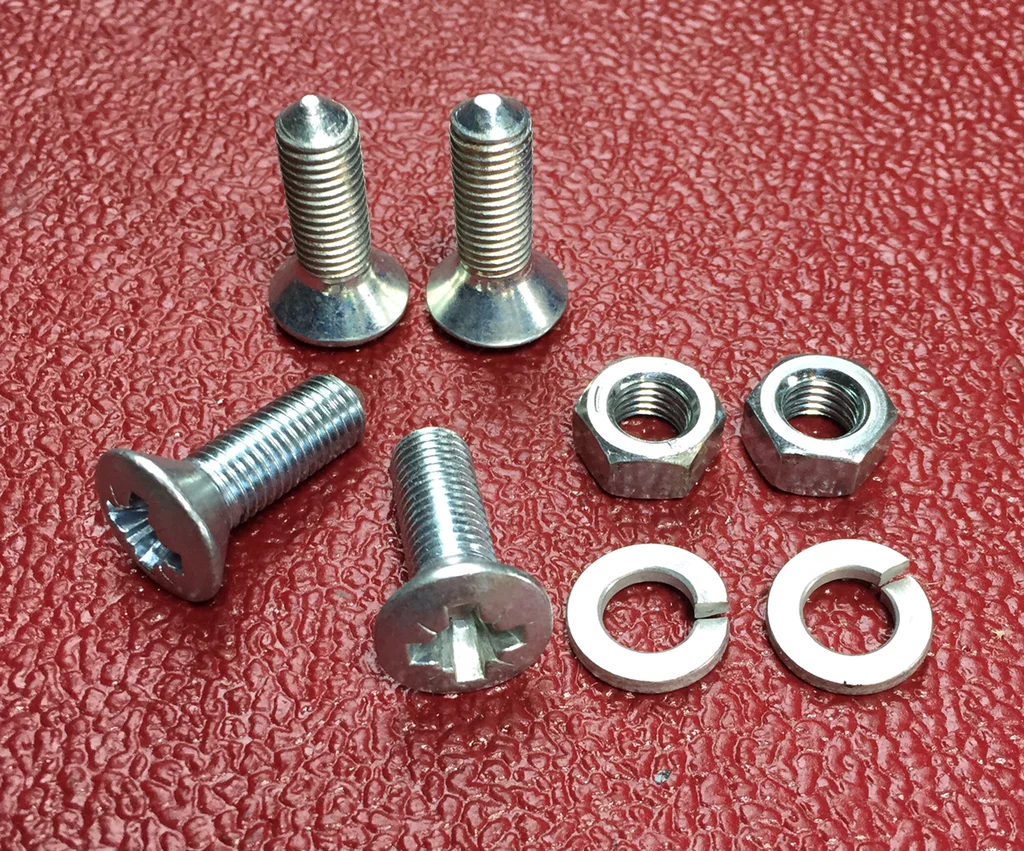We’ve been working on A pillar patches this week, and it’s pretty interesting, particularly since this is a common area of concern on all Sprites and many other classic British cars, as well. All too often, these cars are beautiful, but you’ll find some blisters in the A pillar area, which can ruin an otherwise show-quality car.
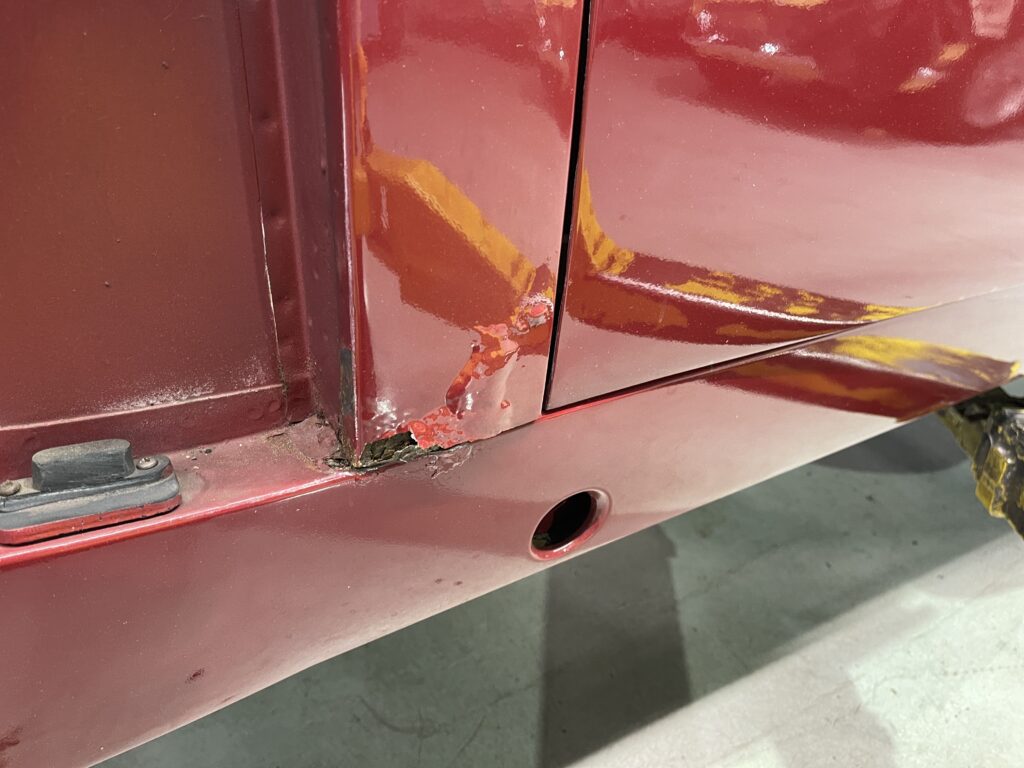
Water enters the A pillar cavity (that’s the rectangular pillar directly in front of the door hinges) through the windshield post mounting holes. You can see in our photos below that the front windshield mounting threaded hole is a direct link to the cavity where we often see rust blisters on Sprites. Once the water runs down that hole it gets trapped with no drainage and can sometimes rust the top of the rocker panel as well.
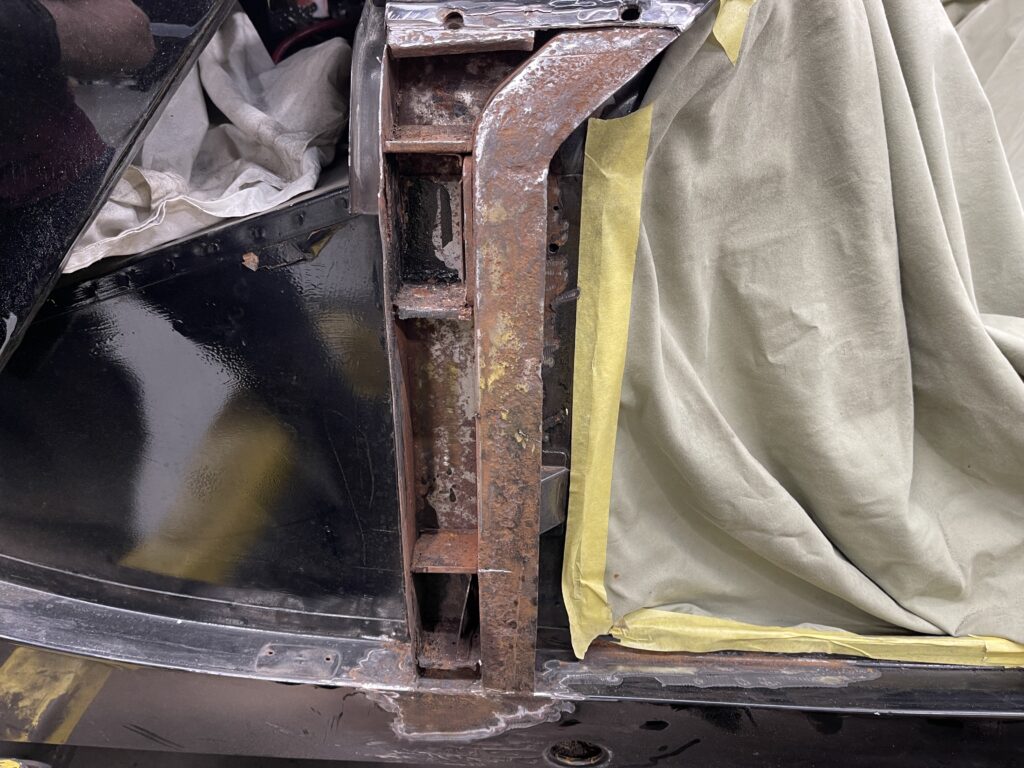
In general, this is nothing more than a nuisance and not a particularly structurally consequential issue, because the rust is usually contained to the small A pillar lower portion. The first patch that you see below is a simple repair of a very small rectangular area where we cut out the rusted area, treated the metal to prevent further rust, and then welded in a small patch. It’s one of the easiest rust repairs you can ever take-on… it’s very satisfying and manageable, and blisters such as these are not usually indicative of larger rust problems throughout the car– it’s usually a localized problem.
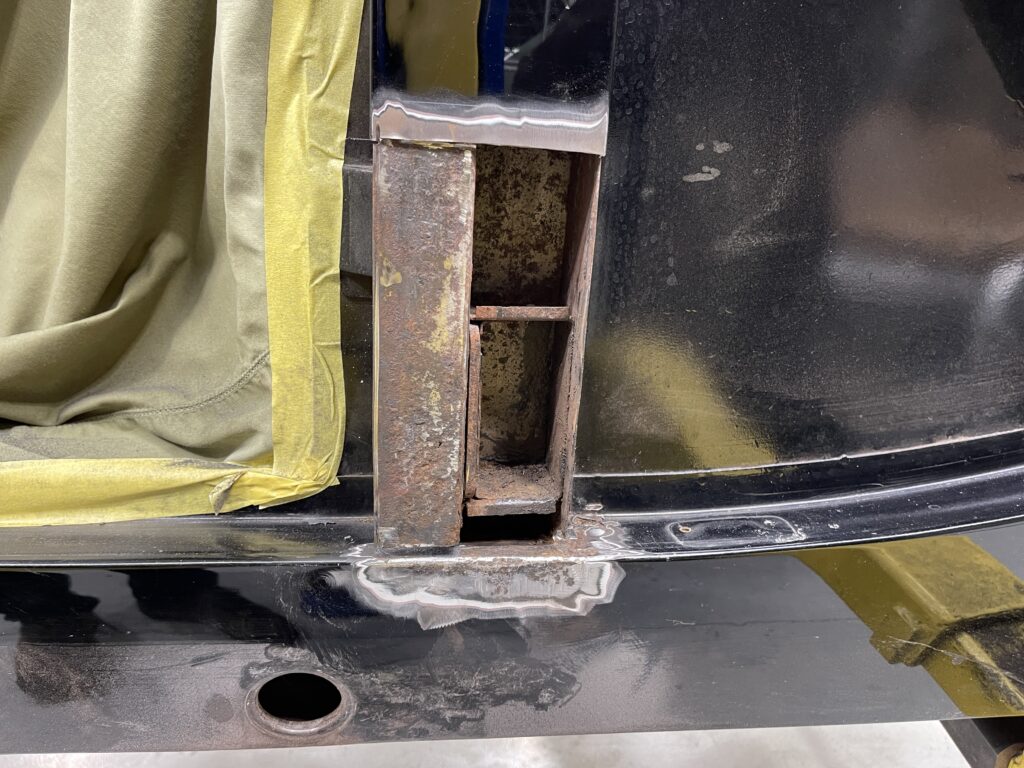
So if you have a car with blisters that are bothering you in your A pillar, we sell a small patch panel that generally fits quite nicely. Without a massive amount of metalworking skill, most hobbyists can make this repair. And if you don’t want to make the repair, you can bring one of these patch panels to a good body shop. They should be able to fix this area without too much complaining because it’s a relatively simple job.
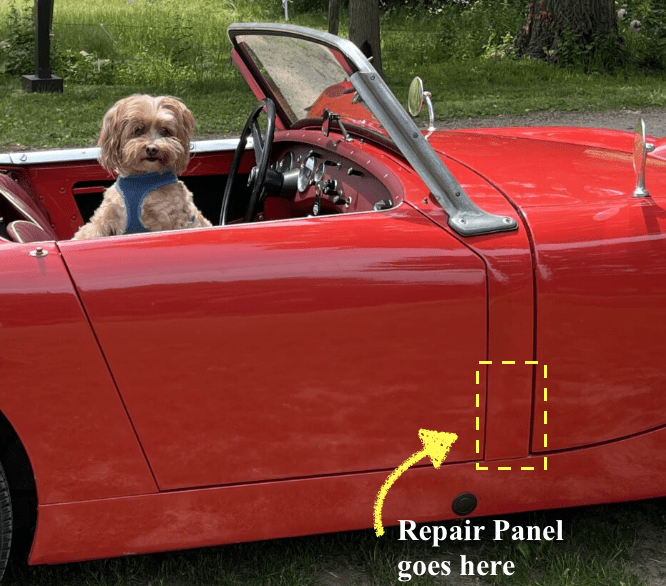
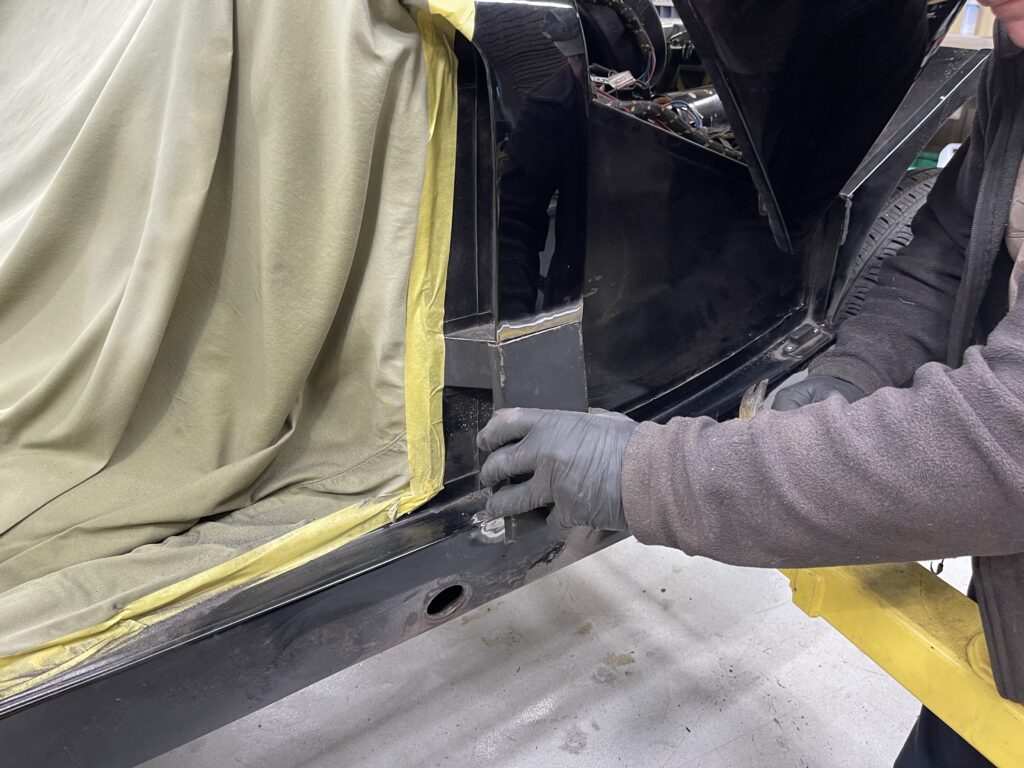
Below you can see one of these patches that’s been welded, primed, and is ready for paint.
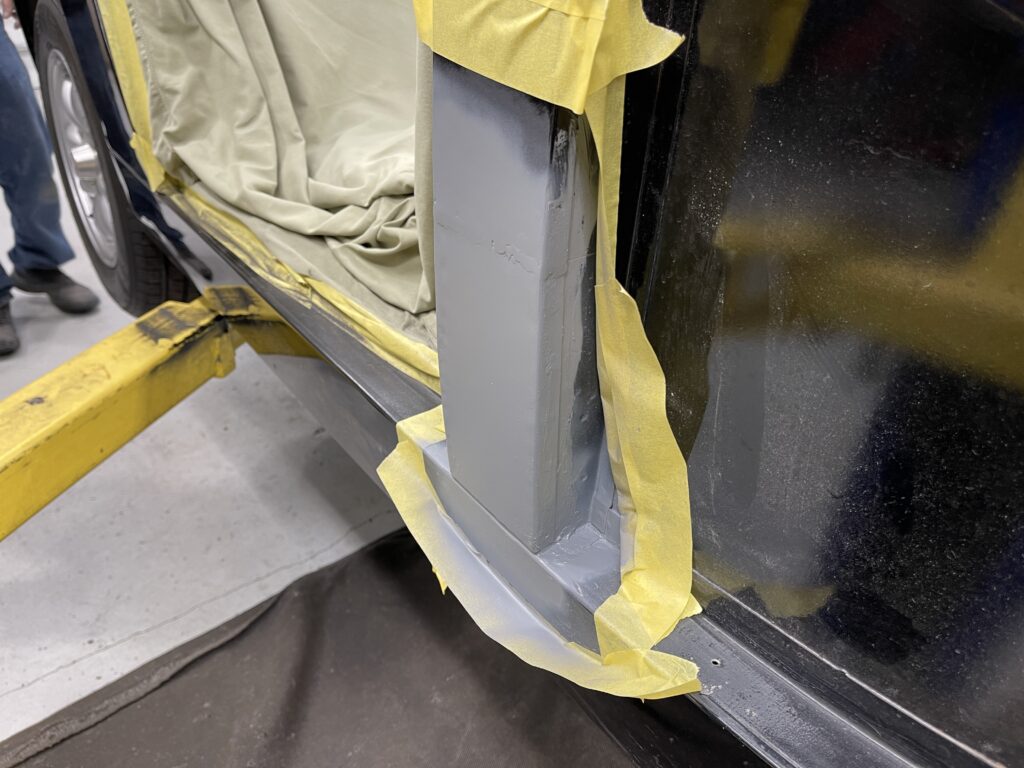
We all have the same goal of stopping rust from forming on our wonderful cars, so how do we keep water from getting into this area and causing this problem in the first place? One of the biggest culprits is car washing. If you’ve ever washed your Bugeye and sprayed water at the windshield, you’ve potentially contributed to filling the A pillar innards with wash water that could exacerbate this problem. I’m reminded of an MGA I went to look at years ago, where the owner told me the car had zero rust and was in perfect condition. When I opened the trunk and peeled back the carpet, there was no trunk floor at all. The owner nearly fainted when I showed her because she told me the car had never been in the rain in the 40 years of their ownership. I asked her how often they wash the car, and she said that her husband washed it weekly; all that water literally just sat in the trunk until it became self-draining (which is to say, the rust holes allowed the water out). So it’s useful to try to keep the area dry around your windshield mounting stanchions.
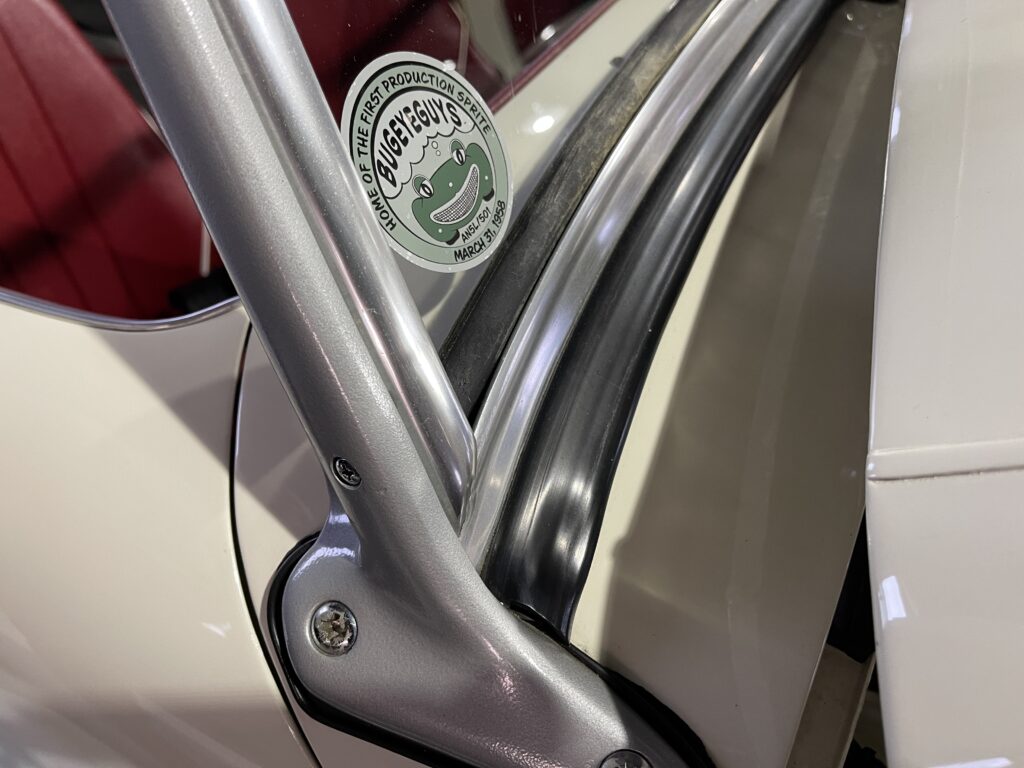
An issue will occur if the windshield-to-body gasket is left too long. In the photos below, you’ll see that this gasket was left too long and actually got pinched between the stanchion and the stanchion gasket. This created a gap, which allowed moisture to run down and fill the gasket with water, which trickled down into the A pillar cavity. This was the “smoking gun” that we believe was the main contributing factor to the rust that necessitated these repairs.
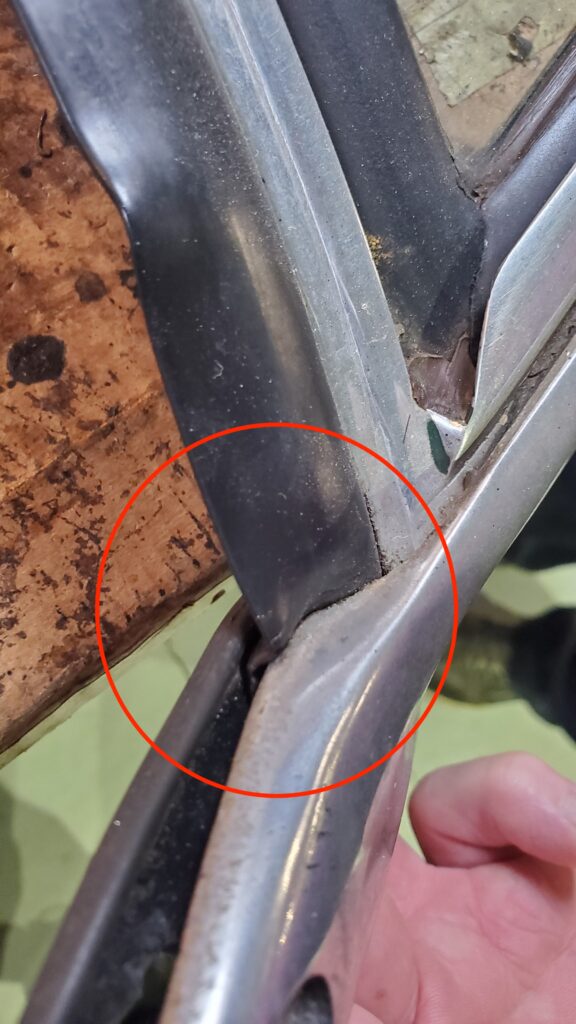
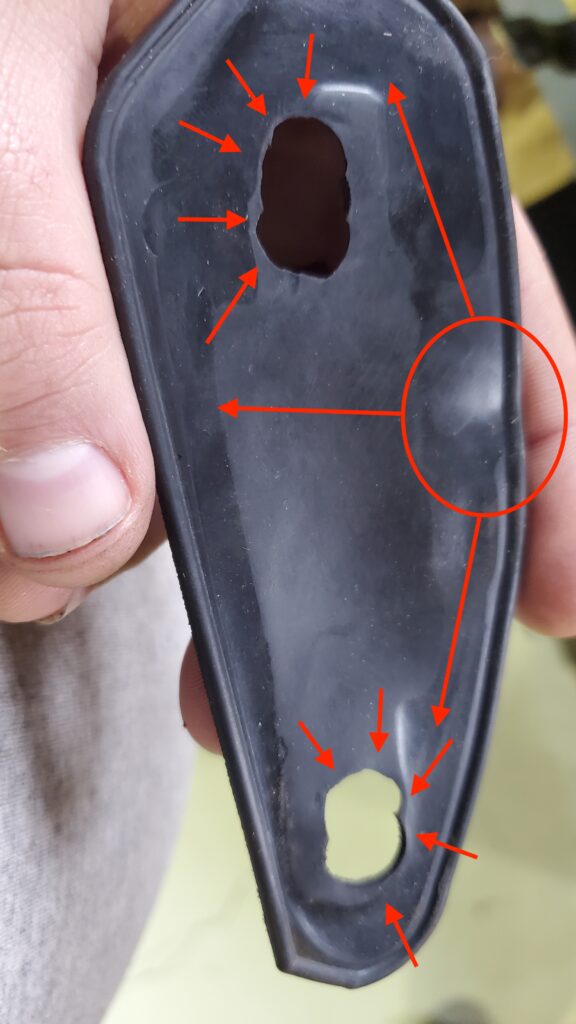
To make matters worse, the body of these cars have a depression between the windshield screws on the top of the A pillar. That sheet metal void is a pocket that ultimately allows water to also find its way into the body holes. Thus, the design of the original structure is contributing to water ingress.
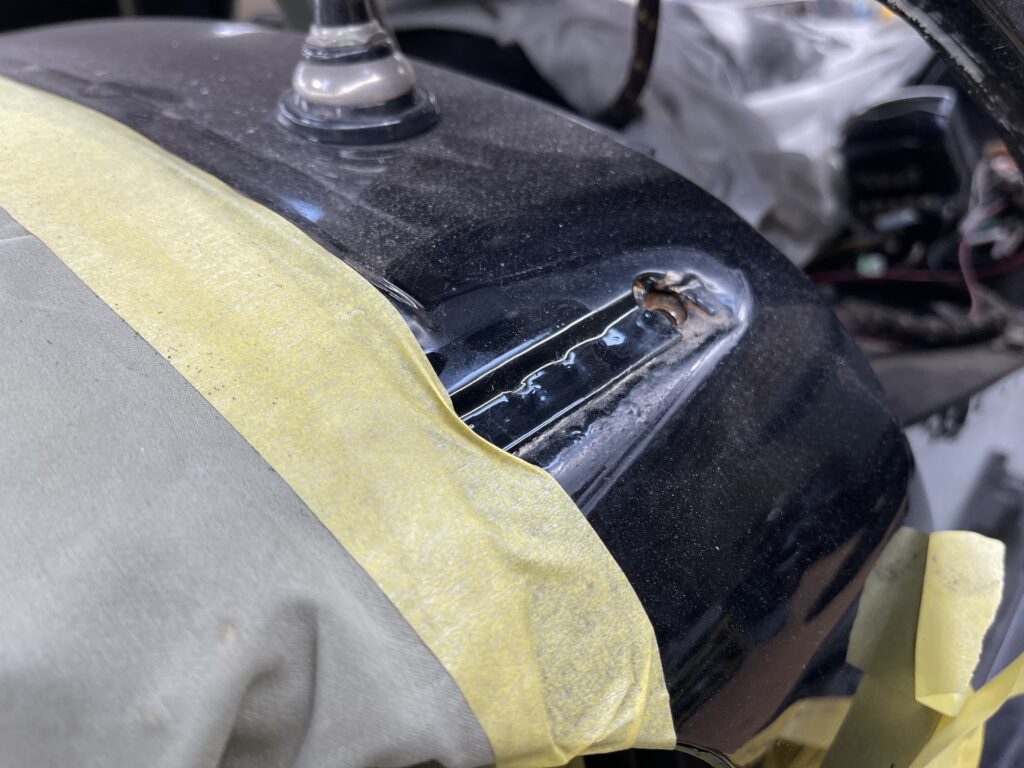
It could be useful to fill this area to make a smoother surface for the pad gasket to connect with, and to prevent water from getting into these holes. I suspect some people may also argue that sealing these holes before you assemble the windshield would also be a smart idea, in order to keep water from finding its way down the threads and into the A pillar cavity.
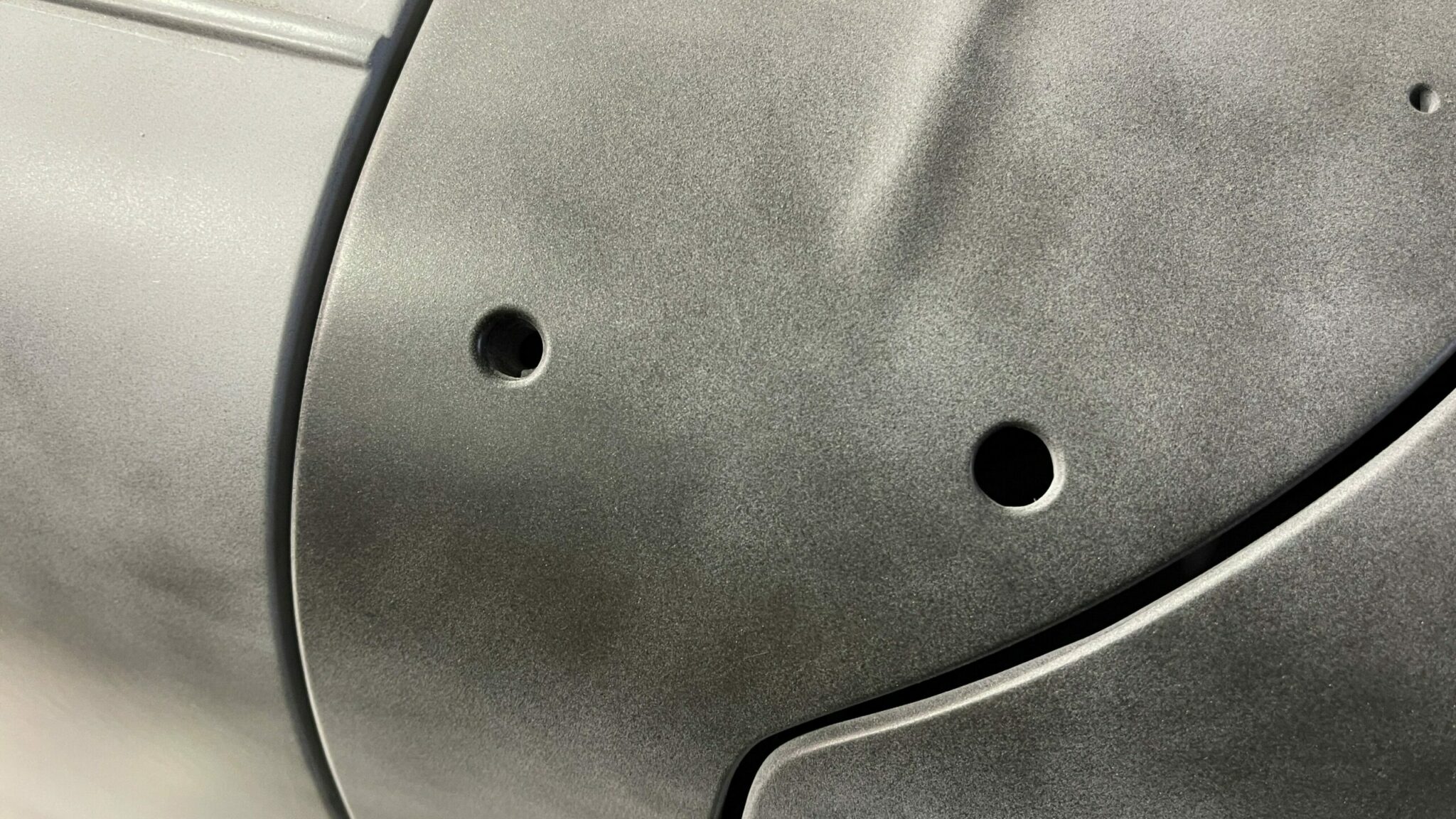
If nothing else, at this point you might want to take a look at your windshield-to-body gasket and see if it’s inviting moisture. We sell all the rubber gaskets so you can replace all this stuff; click on the photos below to check them out! Make sure you trim the windshield gasket tight so you can build a better dam to prevent water from entering!
Like anything else in our world of restoration, there are varying degrees of severity when it comes to A pillar rust, and in the pictures below, you’ll see a more advanced A pillar restoration on the driver’s side of the subject car. In this case, blisters had formed up the entire A pillar, much higher than on most Sprites, and this required cutting off the a pillar cover all the way up to the windshield screws. In the photos below, you can see how the water cascaded down the ledges to the bottom, causing surface rust on each step of the reinforcing structure, as well as on the inside of the A pillar sheet metal. Once we clean and coat all of this metal, we will weld on the larger A pillar patch panel (which we also sell, you can find it here) and this will complete the job. We’re also adding some filler between the windshield screws to try to make a flatter surface for the pad gasket to seal and keep water out of this area.
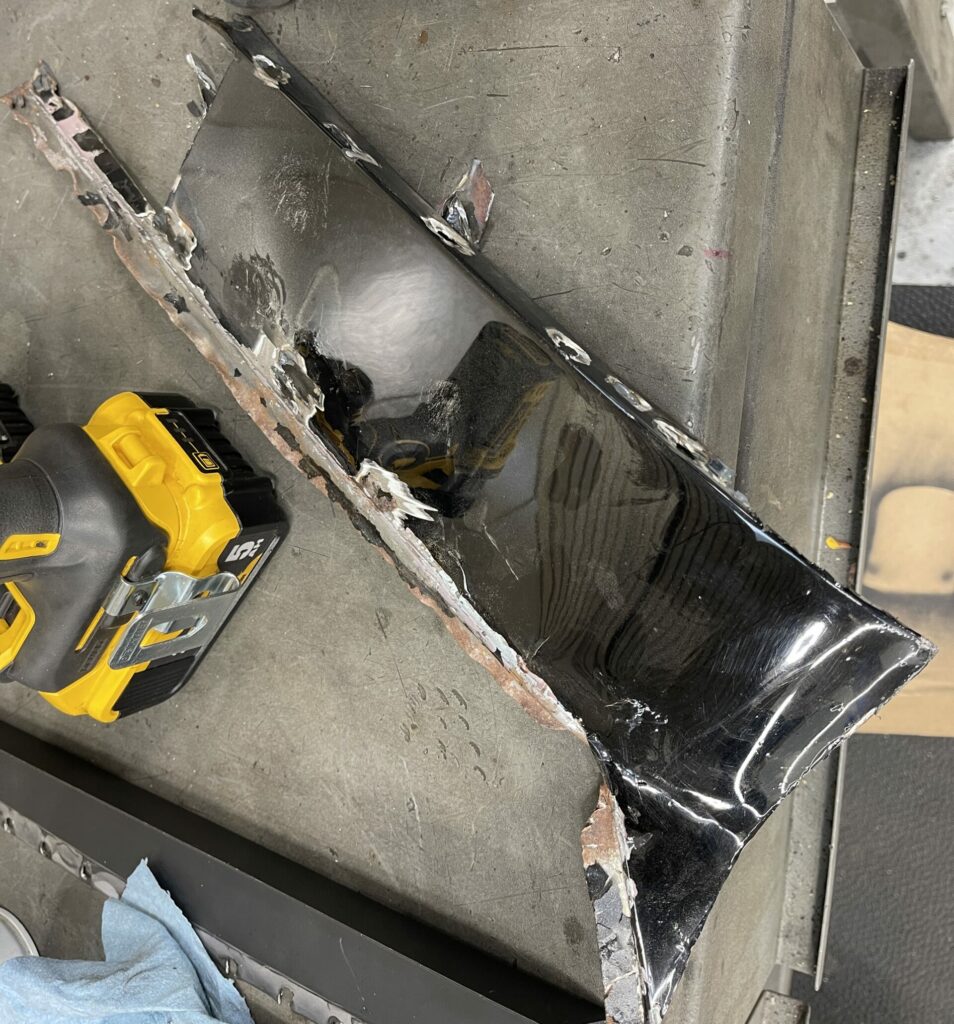
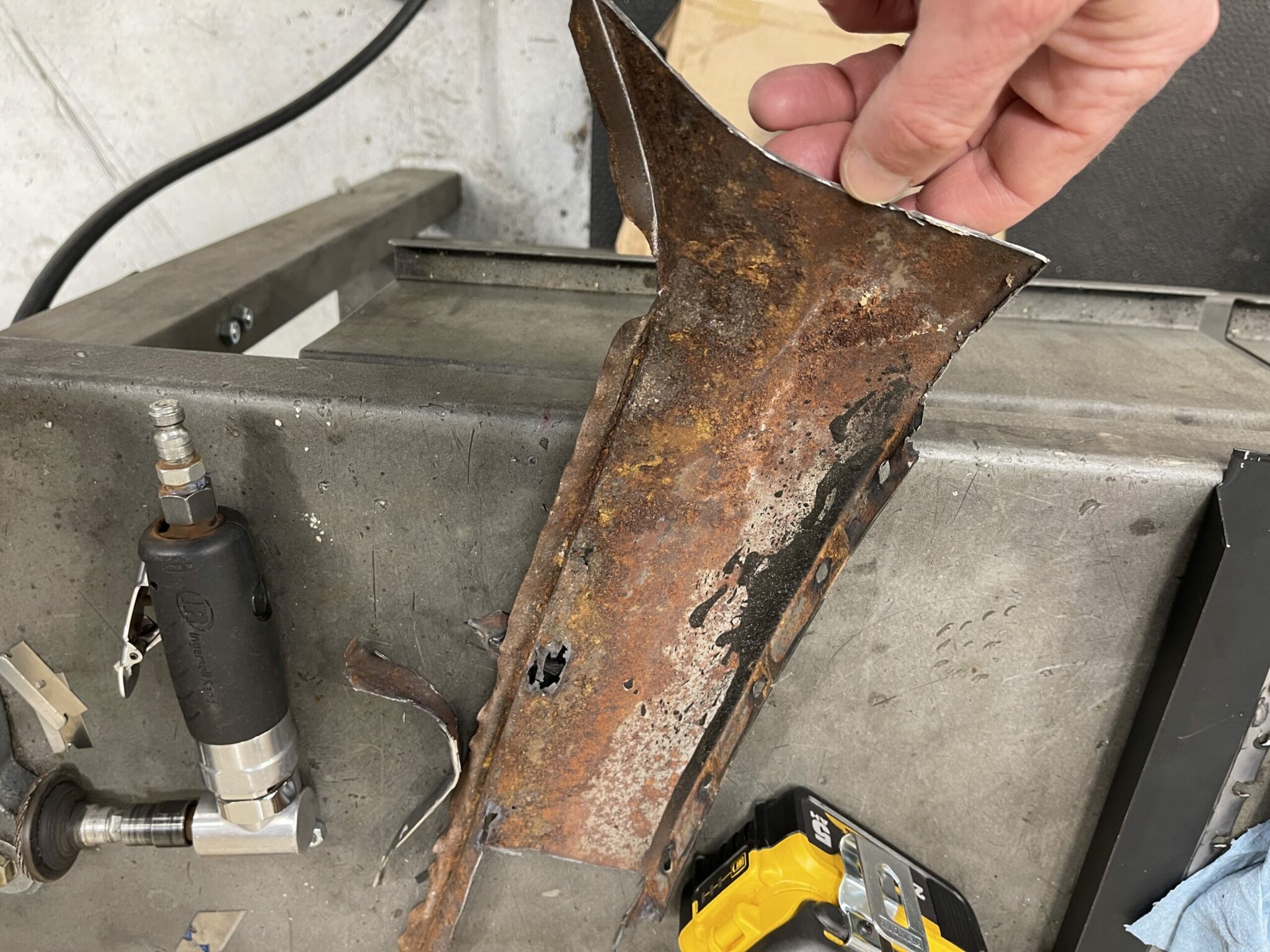

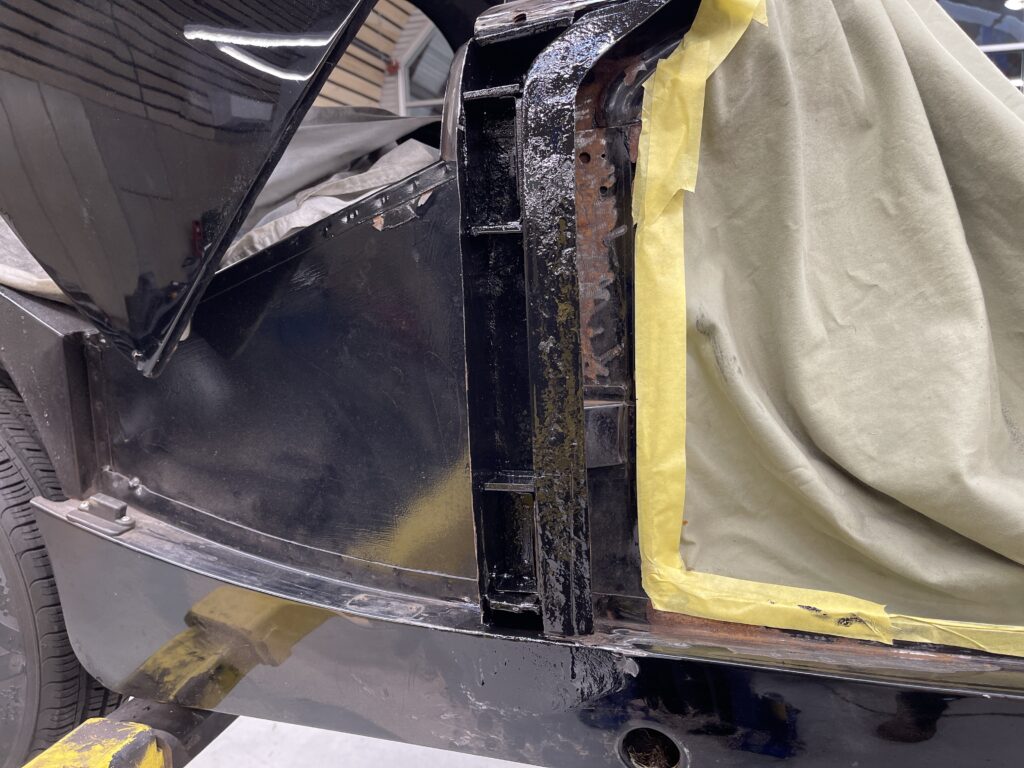
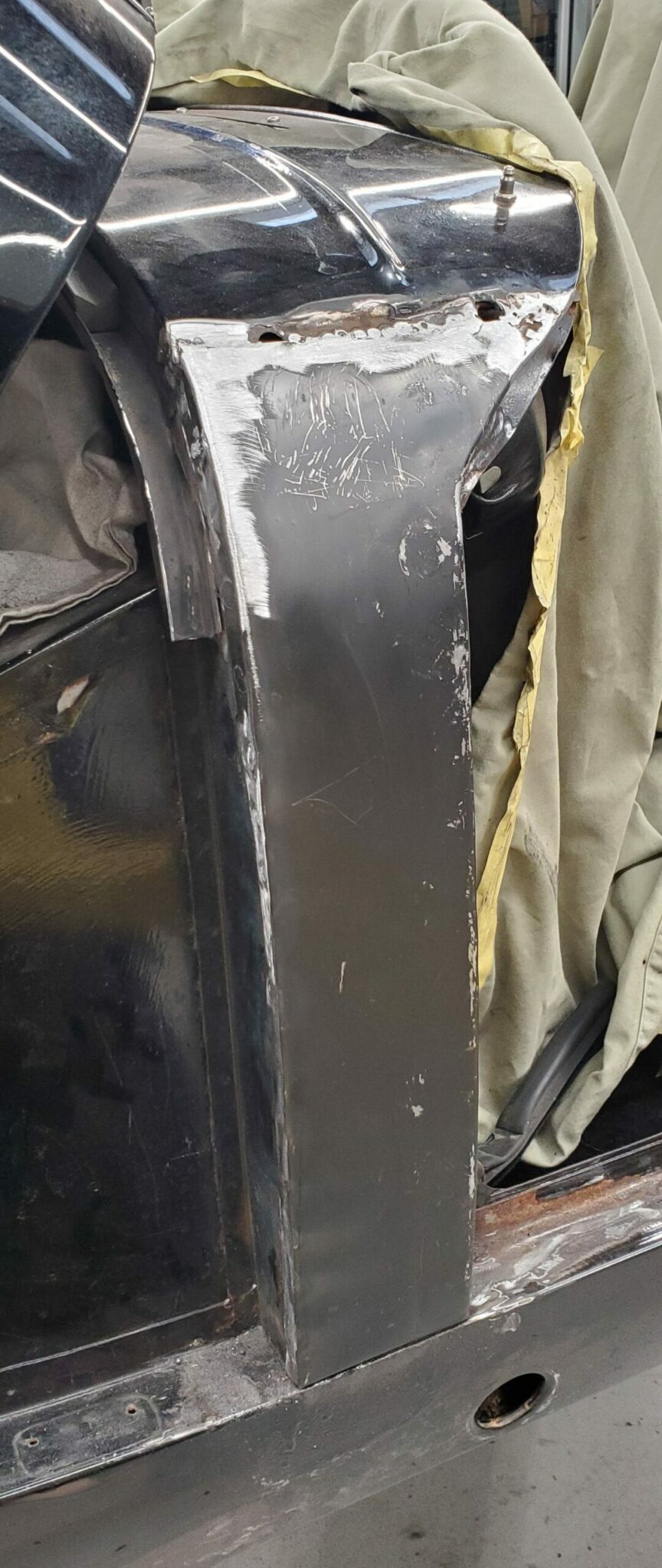
One must marvel at the fact that these British cars came from such a wet environment, and yet still have these water issues. This is just one more reason to try to keep your Sprite in a garage. If that’s not possible for whatever reason, or if you get stuck out in the rain, it’s always a good idea to mop up any water around the windshield stanchions after a drenching to keep it from running down into your A pillars. We’ve recommended in the past that it’s a good idea to raise the nose on your car after a rain storm so that it can drain, because the water thrown up from the front tires will collect underneath the park lights, and often this can rust the “chin” of your bonnet. Lifting it up after the rain will allow gravity to do the work for you and keep your sheet metal in good shape for years to come. A little bit of post-rain maintenance can help dramatically extend the lifespan of your body work!
If you need help with A pillar patches and would like us to pick up your car and bring it here, we can do the same service for you and try and build a more water-tight environment for your car to keep this problem from occurring in the future!
